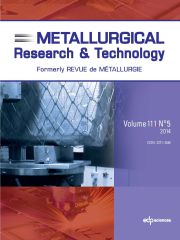Article contents
Crevice corrosion of duplex stainless steels in natural and chlorinated seawater
Published online by Cambridge University Press: 02 February 2012
Abstract
Since contradictory data can be found in the literature, it is often difficult to assess the susceptibility of crevice corrosion of stainless steels in service conditions for a given marine application. The initiation and propagation of crevice corrosion in natural seawater were evaluated for five different duplex stainless steel grades together with some austenitic grades. A CREVCORR-type assembly was used to simulate crevice configurations involving the use of plastic crevice formers. The standard pressure applied on the crevice assembly was 3 N/mm2. Pressure of about 20 N/mm2 was also applied on some selected specimens in order to assess the effect of crevice geometry on crevice corrosion. The effect of environmental parameters (i.e. temperature, flowing conditions, residual chlorine, and dissolved oxygen content) and of surface roughness on the crevice corrosion initiation and propagation were investigated, allowing the assessment of limits of applications for some tested stainless steel grades. The less alloyed duplex stainless steels were evaluated in stagnant seawater at 5 °C and 20 °C. The duplex stainless steel UNS S32205, with PREN = 37, was also evaluated under the same conditions of exposure. The high alloyed stainless steels with PREN above 40 were evaluated in the expected most severe conditions of exposure, namely in 0.5 ppm-chlorinated seawater at 20 °C, in seawater at 30 °C (not chlorinated and with 0.5 ppm of residual chlorine) and in seawater at 50 °C (not chlorinated and with 0.5 ppm of residual chlorine). As expected the less alloyed duplex stainless steels showed limited crevice corrosion resistance in the tested media while UNS S32205 showed better resistance in the less severe tested condition of exposure. In demanding media it was shown that the limits of application of highly alloyed stainless steels are highly dependent on the crevice geometry (i.e. specimen roughness and applied pressure at gasket location).
Keywords
- Type
- Research Article
- Information
- Copyright
- © EDP Sciences 2012
References
Références
- 9
- Cited by


